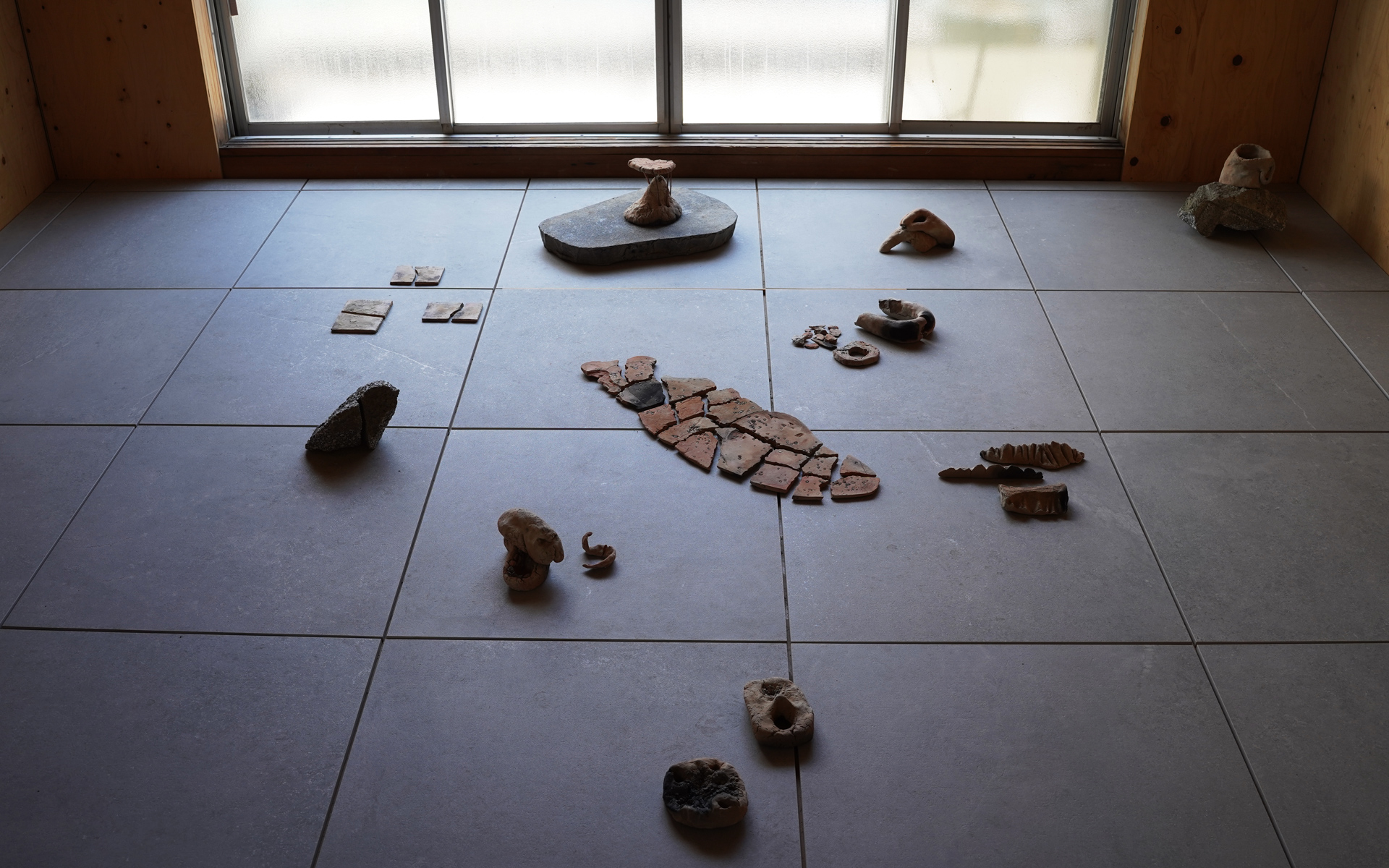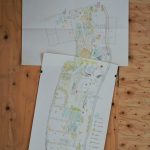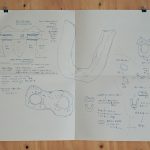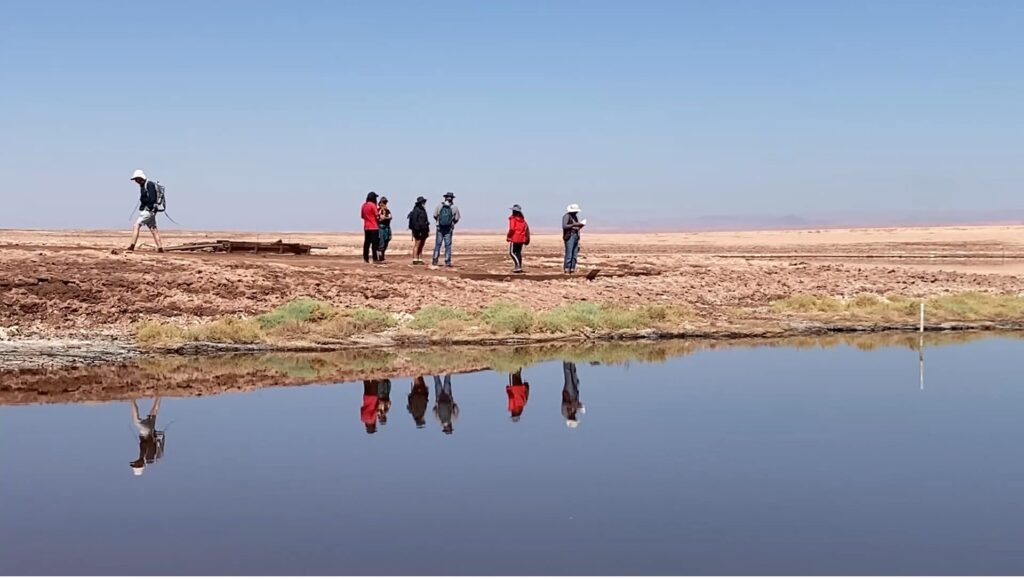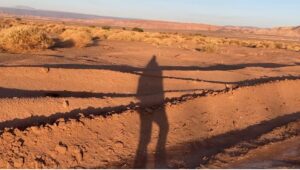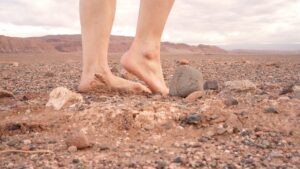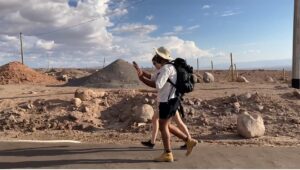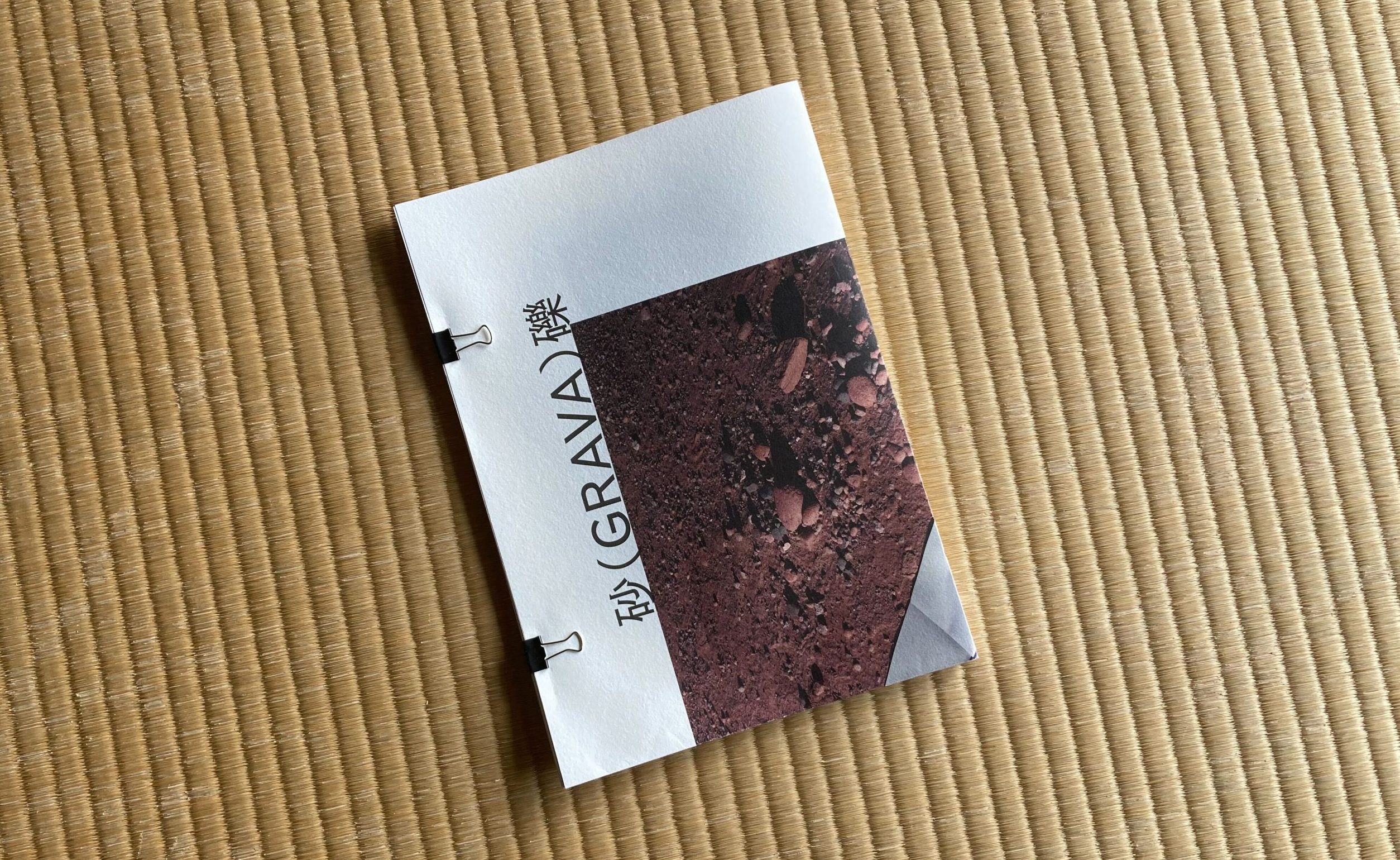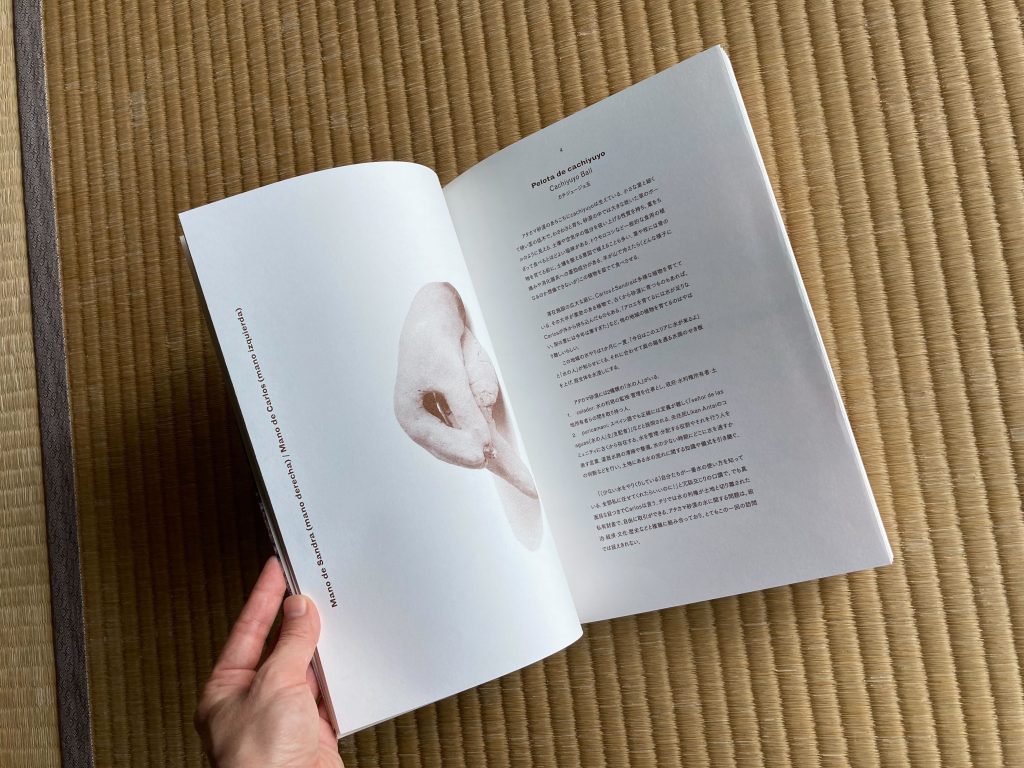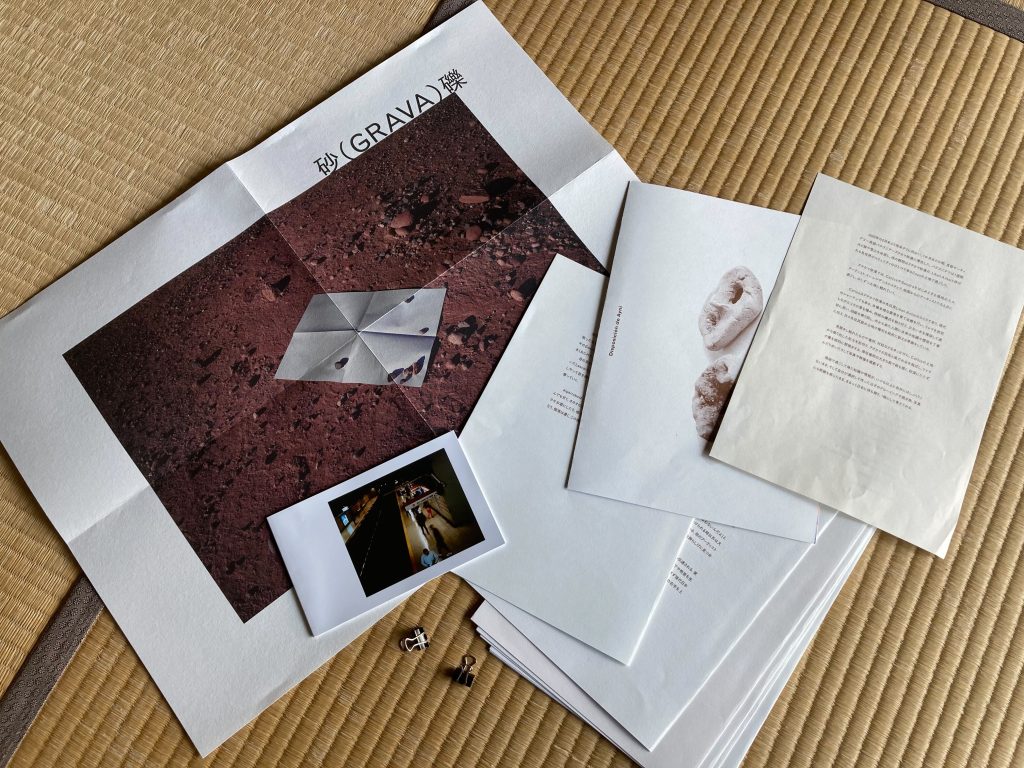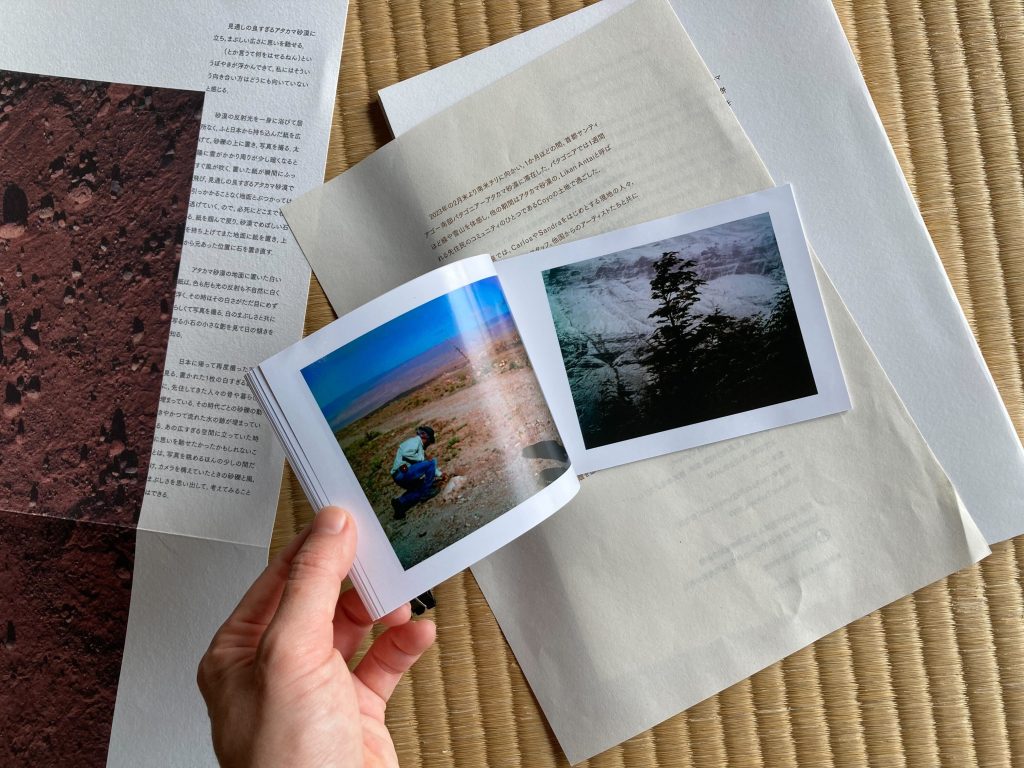2023.08.02-08.23
Solo Exhibition ‘CHI (on) LE 地のレ’ at NIHA gallery, Kyoto, Japan.
個展「地のレ展」、ニハギャラリー、京都。
This installation is composed of works created in Chile, where Tsukuda researched Atacama Desert mourning rituals and burial culture. The gallery’s dark first floor served as a “subterranean” space for introductory video works, while the sunlit second floor displayed her ceramics, drawings, and photographs as the “surface of the earth.”
Below are the still frames of the video works. View the videos here.
–陶、ドローイング、写真、映像(上記4点はスチール)
・陶作品撮影:大澤一太
・映像作品はこちら
———-
【CHILE】チリ(国名)
【レ】ボールが跳ねるように地表に接点の少ない字
【ニハ】1階は地中(のよう)/ 2階はギャラリー
【レ点】下から上へ、一字返って読む
チリに滞在し、土地をうつそう(写そう・移そう)と作家・佃が持ち帰った作品群(陶・ドローイング・写真・映像)で構成された展覧会。
アタカマ砂漠では、その土地に根付く弔いの儀式や埋葬の文化・考え方などのリサーチを目的に滞在した。多様な情報や素材も手に入る一方で、短期の滞在で得られる知識や感覚がいかに地表をさらっただけに留まるかをも感じた。日本でいま一度作品を展示することで、来場者と共にチリで得た知見を共有し、じっくりと話し合う場を作る。
NIHA(ニハ)ギャラリーの日の射さない暗い1階を「地中」と見立て、導入となる映像作品を上映。また、明るい日が強く射し込む2階を「地上」、その床面を「地表」と見立て、陶作品・ドローイング・写真などを展示する。
助成(レジデンス・展覧会・冊子製作):
小笠原敏晶記念財団 2022年度「調査・研究等への助成(現代美術分野)」
PUBLICATION “砂礫 GRAVA”
販売中(詳細後述)
This book is made of photos and texts related to the experience of Tsukuda’s stay in Atacama desert, Chile in 2023, and published for the exhibition, 地のレCHILE (NIHA gallery, Kyoto/2023). The design of this book comes from the form of newsprint paper that Tsukuda brought to Chile from Japan, which was used for drawings, taking photos, wrapping ceramics, etc.
2023年2-3月のチリ・アタカマ砂漠での滞在中に制作した陶作品の写真と、その制作背景となる現地で聞き書きしたことなどを主として編集。滞在先の庭で描いたドローイングや、滞在中の写真なども掲載。
This book can be completely seperated into;
– Front cover :
poster of one of the photo works taken in the desert
– Inside front cover (photo book) :
photos taken by Tsukuda in several areas in Chile
(Santiago, Patagonia, Atacama)
– Each page / front :
ceramic pieces made in Atacama, and texts related to each piece
– Each page / back :
drawings from the garden of the residecy & a plan sheet of one exploded ceramic piece
Texts and Editing, NANAO TSUKUDA
Design, TOSHIYUKI NAKAIE
Photos of Ceramics, ITSUHIRO OSAWA
Book Making, NIHA niha.jp
販売中
冊子『砂礫 GRAVA』
— 2,750円(税込・送料別)
冊子概要:
●表紙:(A2変形)砂漠で撮影した写真のポスター
●本体:(A3変形二つ折り)
表・陶作品の写真とテキスト
裏・ドローイングなど
●写真冊子:(160x98mm)
首都サンティアゴ、南部パタゴニア地方、アタカマ砂漠の写真が混在。
3種類のうち1種がランダムに添付される。
●企画・執筆・編集:佃七緒
●作品写真:大澤一太
●デザイン:中家寿之
ご購入時のご注意
- ご購入の際は専用の問合せフォームにてご連絡ください。ご質問等も同じくそちらにて。
- お支払いは銀行振込にてお願いしております。詳細は直接ご連絡いたします。
- 配送時は、基本はクリックポスト(送料185円)で簡易梱包にて送付いたします。(2冊以上ご購入の場合はご相談ください。)
- 送料・振込手数料はご負担お願いいたします。
- 未だ製作中のため、到着まで少しお時間いただく可能性があります。ご了承ください。
INTRODUCTION – from the book
Standing in the middle of the vast Atacama Desert, feeling dizzy from the glare of the sun and the excessively clear landscape, I was looking for myself to be impressed by the view. To describe it correctly, I tried to think of it as an emotional experience, but I was not in my nature to do so.
I was just exposed to the reflected light of the desert sun, feeling completely out of place.
After standing still, I somehow deiceded to spread out a piece of paper that I had brought from Japan, place it on the sand and gravel, and take some photos.
As I looked through the camera, the ground suddenly turned dark, showing that the sun had been covered by clouds, and soon a strong wind began to blow.
In an instant, the paper on the ground was swept away, in the vast and too clear Atacama Desert, crashing to the ground and flying away, without getting caught by anything.
Run. I run. I ran after the paper endlessly.
Finally, I grabbed the paper and walked back to where I had started, lifted a good-sized stone, placed the paper under it, and restored the stone approximately to its original position.
The paper, placed on the desert ground, reflected the light artificially, floating unnaturally white in color and shape. The whiteness of the paper was simply unusual to my eyes. I knew the sun was setting when I saw the small shadows of the pebbles that appeared with the white glare.
After returning to Japan, I looked again at the photos I had taken.
Underneath this sheet of dazzling paper, the bones and lives of the people there are still buried. Also buried beneath are the movement of sand of each era and the traces of water that once flowed through the area.
Standing in that incredibly distant landscape, I wanted to have something in my mind.
For a few moments looking at the photos, I can think about it again, remembering the desert sand and gravel, the strong wind, and the glaring light that I felt with my camera.
序文 – 本文より抜粋
見通しの良すぎるアタカマ砂漠に立ち、まぶしい広さに思いを馳せる。
(とか言うて何をはせるねん)
というぼやきが浮かんできて、私にはそういう向き合い方はどうにも向いていないと感じる。
砂漠の反射光を一身に浴びて居所なく、ふと日本から持ち込んだ紙を広げて、砂礫の上に置き、写真を撮る。太陽に雲がかかり周りが少し暗くなるとすぐ風が吹く。置いた紙が瞬間にふっ飛び、見通しの良すぎるアタカマ砂漠で引っかかることなく地面とぶつかっては逃げていく。ので、必死にどこまでも走る。紙を掴んで戻り、砂漠でめぼしい石を持ち上げてまた地面に紙を置き、上から元あった位置に石を置き直す。
アタカマ砂漠の地面に置いた白い紙は、色も形も光の反射も不自然に白く浮く。その時はその白さがただ目にめずらしくて写真を撮る。白のまぶしさと共に写る小石の小さな影を見て日の傾きを知る。
日本に帰って再度撮った写真を見る。
置かれた1枚の白すぎる紙の下に、先住してきた人々の骨や暮らしが埋まっている。その時代ごとの砂礫の動きやかつて流れた水の跡が埋まっている。あの広すぎる空間に立っていた時に思いを馳せたかったかもしれないことは、写真を眺めるほんの少しの間だけ、カメラを構えていたときの砂礫と風、まぶしさを思い出して、考えてみることはできる。
